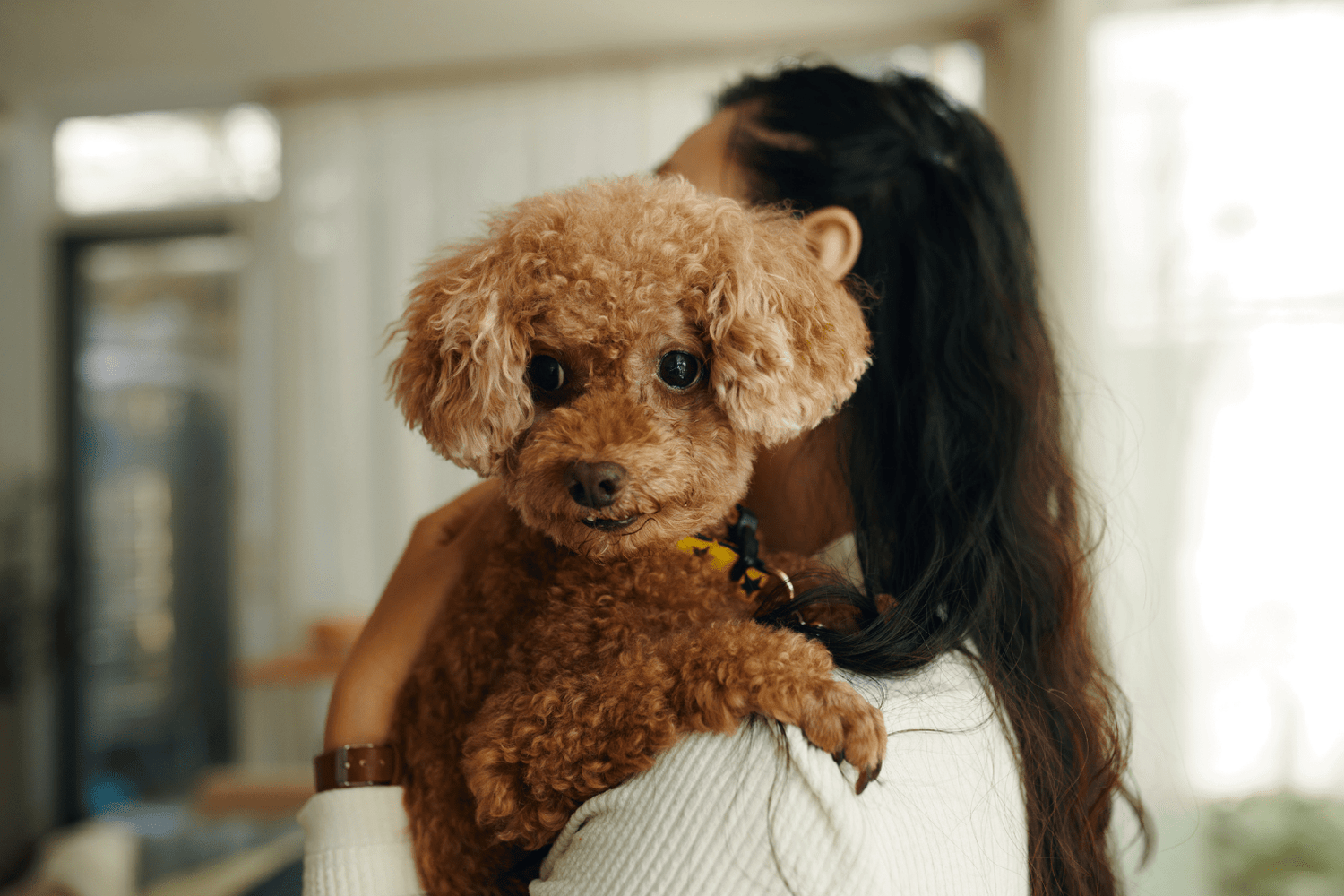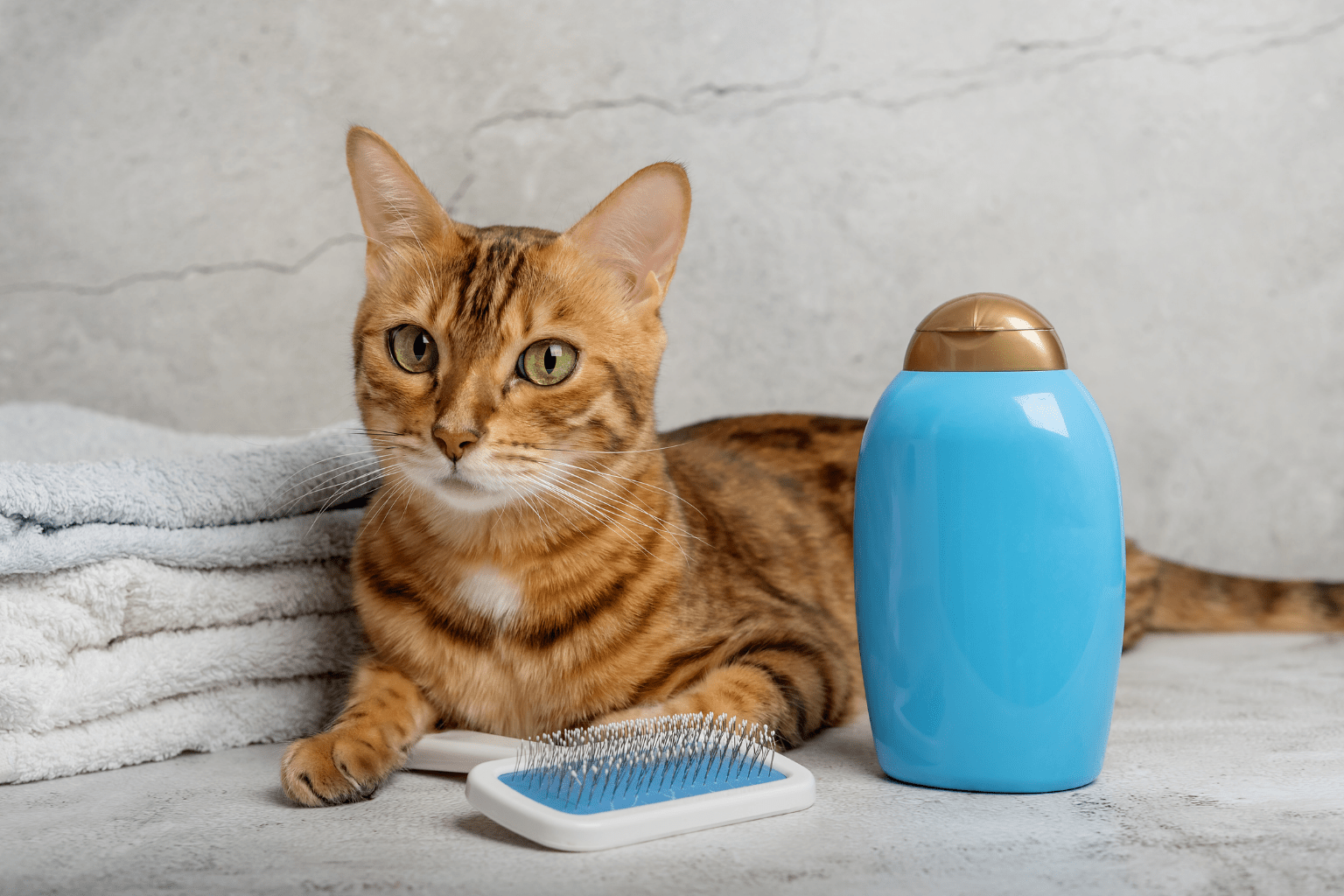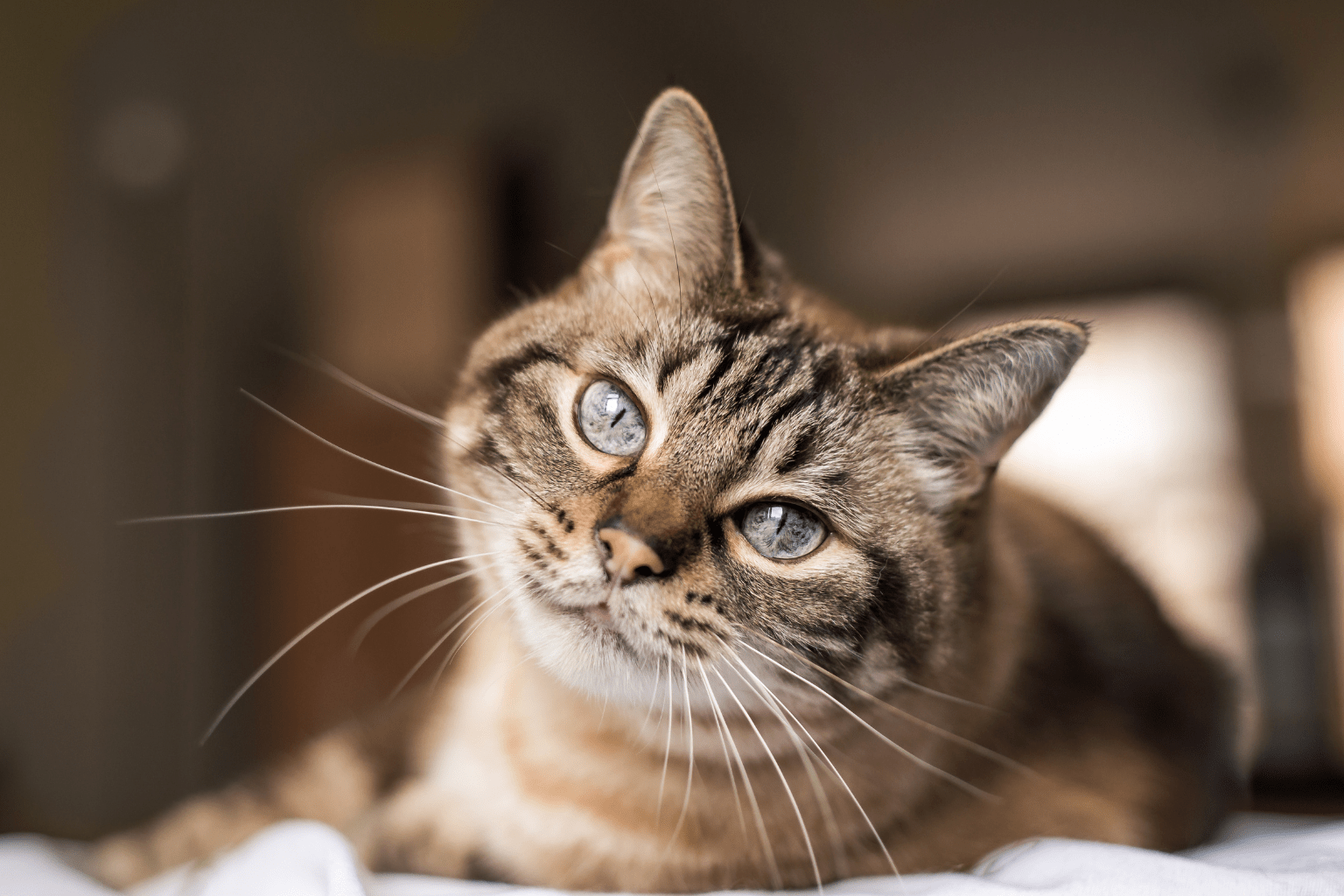Key Takeaways
- Dogs have unique facial expressions that can resemble smiles.
- Dog smiles are different from human smiles in meaning and appearance.
- Dogs use facial cues to show joy, contentment, and playful behavior.
- Understanding your dog's expressions helps you recognize their emotions better.
Table of Contents
- Anatomy of a Dog Smile, Signs and Subtle Clues Most Pet Parents Miss
- Dog Smiles Through the Ages, A Tale of Evolution and Domestication
- What Is Your Dog Really Saying? Emotional Meanings Behind the Smile
- Dogs Versus Humans, How Canine Smiles Compare to Ours
- When a Smile Isn't a Smile, Common Misreadings and How to Avoid Them
- Beyond the Grin, How Happy Dogs Really Show Joy
- Smiling Breeds, Which Dogs Are Known for Their Grins
- How to Encourage Your Dog's Happy Grin, Practical, Positive Tips
- Capturing Your Dog's Smile, Best Tips for the Perfect Shot (and How to Make Grins Last)
- Troubleshooting & Health Considerations, When Smiles Signal Something More
- The Science of Smiling, How Dog Grins Affect Us (and Why It's Good for Health On Both Sides)
- Bringing More Smiles Into Your Dog's Life
Do Dogs Smile? What Your Dog's Grin Really Means (and How to Tell If They're Happy)
That adorable expression when your pup tilts their head after a belly rub, is it really a smile? The short answer: dogs smile in their own unique way, though it's quite different from our human grins. While dogs don't smile to express happiness the same way we do, they absolutely have facial expressions that signal joy, contentment, and even playful mischief.
Understanding whether your dog is genuinely happy or showing stress signals can transform how you connect with your furry family member. Let's decode what that precious "grin" really means and how to spot the difference between a joyful pup and one who needs your support. Pet Relax can help promote a calm demeanor, creating the ideal conditions for those genuine happy moments to shine through.
For dogs dealing with allergies or immune challenges that might affect their mood and comfort, the Dog Allergy & Immune Support Remedy can support overall wellbeing, helping your pup feel their best and show off those joyful grins more often.
Quick Smile Spotter Checklist
- Relaxed jaw with mouth slightly open
- Soft, squinty eyes (not wide or staring)
- Loose body posture with wiggly movement
- Gently panting tongue hanging to one side
- Ears in natural position (not pinned back or rigid)
Anatomy of a Dog Smile, Signs and Subtle Clues Most Pet Parents Miss
A genuine dog smile involves their entire face working in harmony. The relaxed jaw sits slightly open, lips pulled back gently (not tightly), and those beloved soft, squinty eyes that seem to sparkle. The tongue often lolls to one side in a carefree way, and the whole expression feels loose and natural.
Here's where many pet parents get confused: dogs also show teeth during stress, submission, or even aggression. The key difference lies in the surrounding body language and facial tension. A stressed dog might pant heavily with a rigid mouth, while an anxious pup shows whale eye (whites visible) alongside their "grin."
| Expression Type | Mouth/Lips | Eyes | Body Language |
|---|---|---|---|
| Happy Grin | Relaxed, slightly open | Soft, squinty | Wiggly, loose |
| Stress Pant | Wide open, tense | Wide, alert | Rigid, pacing |
| Submissive Grin | Lips pulled back, teeth showing | Squinty, averted | Lowered, cowering |
| Aggressive Display | Lips curled, snarling | Hard stare | Forward, stiff |
Take Toby, a Beagle mix whose classic post-fetch grin involves his whole face crinkling up with joy, ears relaxed, mouth hanging open in that satisfied way that makes his humans melt every single time.
Dog Smiles Through the Ages, A Tale of Evolution and Domestication

Thousands of years of living alongside humans have literally shaped our dogs' faces for maximum expressiveness. Scientific research shows that domesticated dogs have significantly more facial muscle variations than their wolf ancestors, particularly around the eyes and eyebrows, giving them those irresistible "puppy dog eyes" we can't resist.
This process, called neoteny, means adult dogs retain juvenile facial features throughout their lives. Selective breeding amplified these traits because humans consistently chose the most expressive, appealing companions. Ancient civilizations recognized this too, Mayan sculptures and Egyptian art frequently depict dogs with upturned mouths and bright, alert expressions.
Smile Evolution Timeline
- 15,000+ years ago: Early domestication begins facial muscle changes
- Ancient Egypt (3000 BCE): First artistic depictions of "smiling" dogs
- Victorian Era (1800s): Selective breeding intensifies expressive traits
- Modern day: 27+ facial muscle variations vs. wolves' basic structure
What Is Your Dog Really Saying? Emotional Meanings Behind the Smile
Context is everything when decoding whether dogs smile from happiness or other emotions. A genuine joy-smile typically happens during positive activities, after meals, during play, or when their favorite human walks through the door. The dog's entire body participates with loose, wiggly movement.
The submissive grin tells a different story entirely. These dogs show more teeth, often with lowered heads and squinty eyes, essentially saying "I'm not a threat, please don't be upset with me." It's appeasement behavior, not happiness, though many humans misread it as guilt or shame.
Three key tips for accurate reading: watch the whole dog (not just the face), consider what just happened (greeting, correction, new situation), and notice rapid changes in expression that might signal uncertainty or stress.
If you're curious to learn more about the science and meaning behind canine grins, check out this in-depth article: do dogs smile.
Dogs Versus Humans, How Canine Smiles Compare to Ours
While both human and dog smiles evolved to strengthen social bonds, they work through completely different mechanisms. Human smiles primarily use cheek muscles to lift mouth corners, while dogs create their expressions through jaw relaxation and lip positioning combined with eye softening.
The biggest difference? Intentionality. Humans consciously smile to communicate emotions or social messages. Dogs' expressions are more reflexive responses to their emotional state, they're not "performing" happiness but genuinely displaying it through natural facial relaxation.
| Aspect | Dog Smile | Human Smile |
|---|---|---|
| Primary Muscles | Jaw relaxation, lip positioning | Cheek muscles lifting mouth corners |
| Intentionality | Reflexive emotional response | Conscious communication tool |
| Social Function | Displays current emotional state | Conveys messages and builds rapport |
| Duration | Matches emotional duration | Can be sustained for social purposes |
Understanding this difference prevents anthropomorphizing, projecting human emotions onto our dogs. When we see a submissive grin, it's not human-style guilt but rather sophisticated canine communication designed to maintain pack harmony.
When a Smile Isn't a Smile, Common Misreadings and How to Avoid Them

The most dangerous mistake? Confusing a stress pant with a happy grin. Stressed dogs often have wide-open mouths with heavy panting, but their eyes remain alert and worried rather than soft and squinty. Their bodies stay rigid instead of loose and wiggly.
Another common mix-up involves mistaking submissive grins for genuine happiness. These dogs pull their lips back to show teeth while lowering their heads and bodies, essentially saying "please don't be upset with me" rather than expressing joy.
Do This, Not That
DO: Check body language, ears, and tail position alongside facial expression
DON'T: Assume teeth showing always means aggression
DO: Consider environmental context (vet visit, thunderstorm, new people)
DON'T: Force interactions when dogs show submissive grins
Most importantly, watch for tension in the jaw, neck, or shoulders. A truly happy dog carries relaxation throughout their entire body, while stressed or anxious dogs hold tension even when their mouth appears to be "smiling."
For more on how to keep your dog active and happy indoors, you might enjoy this helpful guide on how to exercise dogs indoors.
Beyond the Grin, How Happy Dogs Really Show Joy
While facial expressions offer clues, whole-body language tells the complete happiness story. Genuinely joyful dogs display loose, wiggly movement with that famous helicopter tail wag that involves their entire rear end. They initiate play bows, make happy vocalizations, and seek out interaction rather than avoiding it.
The subtler signs many pet parents miss include soft, relaxed breathing (not heavy panting), snuggle-seeking behavior, and those precious moments when they bring you their favorite toy as a "gift." Their eyes appear bright but calm, not wide with alertness or worry.
Three actionable observation tips: watch your dog's entire body during happy moments, keep mental notes of what triggers genuine joy, and learn your individual dog's quirks, some pups smile more obviously than others.
Smiling Breeds, Which Dogs Are Known for Their Grins
Certain breeds have facial structures and temperaments that make their happy expressions more pronounced and human-readable. These dogs aren't necessarily happier than others, but their anatomy makes their joy more obvious to us.
| Breed | Signature Expression | What Makes It Special |
|---|---|---|
| Samoyed | Classic "Sammy smile" | Upturned mouth corners, bright eyes |
| Shiba Inu | Mischievous grin | Squinty eyes, curled tail expression |
| Corgi | Goofy, wide grin | Large mouth, perked ears frame |
| Golden Retriever | Gentle, warm smile | Soft features, relaxed jaw |
| Border Collie | Intelligent, alert grin | Expressive eyes, mouth slightly open |
| Pit Bull | Wide, jowly smile | Broad face, relaxed cheek muscles |
These breeds developed their expressive faces through both natural temperament and selective breeding for companionship. Their facial muscle structure and bone shape create more human-readable expressions, making it easier for us to recognize when dogs smile with genuine contentment.
For dogs whose smiles are sometimes affected by dental discomfort, the Dog Bad Breath & Dental Care Remedy can help support oral health and keep those grins looking and feeling their best.
How to Encourage Your Dog's Happy Grin, Practical, Positive Tips

Creating more opportunities for genuine happiness starts with engaging play sessions tailored to your dog's interests, fetch for retrievers, puzzle games for working breeds, or simple tug-of-war for social pups. Positive reinforcement training builds confidence and creates those proud, satisfied expressions after successful learning.
Establishing calming routines helps anxious dogs relax enough to show their natural joy. When stress or discomfort interferes with your dog's happiness, gentle natural support can make a meaningful difference. For dogs dealing with anxiety or restlessness, Pet Relax can help promote a calm demeanor, creating the ideal conditions for those genuine happy moments to shine through.
Regular mental stimulation through training games, scent work, or new experiences keeps dogs engaged and content. The goal isn't to force expressions but to create an environment where your dog's natural happiness shines through.
If your dog struggles with skin or coat issues that affect their comfort and mood, the Dog Healthy Skin & Coat Remedy can help support a happier, more comfortable pup.
Capturing Your Dog's Smile, Best Tips for the Perfect Shot (and How to Make Grins Last)
The best dog photos happen when your pup is genuinely happy, not when you're chasing them with a camera. Natural light from a window or outdoor shade creates the softest, most flattering glow for those precious moments when dogs smile naturally.
Timing matters more than equipment. Snap photos right after play sessions, during treat time, or when your dog first sees you after being apart. These moments capture authentic joy rather than forced expressions.
Quick Photo Success Tips:
- Get on their level: Crouch down for eye-to-eye shots that show facial expressions clearly
- Use their favorite squeaky toy: Hold it just above your camera to direct their gaze and spark interest
- Keep sessions short: 5-10 minutes prevents your dog from getting tired or stressed
- Reward immediately: Praise and treats create positive associations with photo time
For dogs who turn away from cameras, start by simply sitting nearby with your phone, letting them investigate. Once they're comfortable, begin taking photos during their natural happy moments rather than staging formal poses.
Want to learn more about canine behavior and communication? Explore this resource on dog behavior for additional insights.
Troubleshooting & Health Considerations, When Smiles Signal Something More
Not every grin means happiness. Excessive panting with a "smile" when your dog hasn't been active could indicate overheating, anxiety, or discomfort. Watch for rigid body posture, drooling, or restlessness alongside facial expressions.
Dental issues sometimes create the appearance of smiling when dogs favor one side of their mouth or hold their lips differently to avoid pain. If your dog's "smile" suddenly changes or appears only on one side, schedule a dental check. For more on this topic, see can dogs get gum disease.
Submissive grins, where dogs pull back their lips to show teeth while lowering their head, often get mistaken for happy expressions. These typically happen during greetings with strangers or after mild corrections, signaling appeasement rather than joy.
For dogs experiencing stress-related behaviors, gentle natural support can help maintain emotional balance. Pet Relax promotes a calm disposition using natural ingredients that work with your dog's body to encourage balance, without altering your dog's personality or causing drowsiness.
For additional reading on the science behind canine smiles, see this external resource on whether dogs are really smiling.
The Science of Smiling, How Dog Grins Affect Us (and Why It's Good for Health On Both Sides)

When we see our dogs smile, our brains release oxytocin, the same hormone involved in human bonding and stress reduction. Research from Azabu University found that mutual gazing between dogs and humans triggers this "love hormone" in both species, creating a positive feedback loop.
This biological response explains why dog photos dominate social media and why therapy dogs are so effective. Our nervous systems literally calm down when we see happy dog expressions, lowering cortisol levels and reducing blood pressure.
| Mutual Smile Benefits | For You | For Your Dog |
|---|---|---|
| Stress Reduction | Lower cortisol, reduced anxiety | Calmer environment, less tension |
| Bonding Strengthened | Increased oxytocin release | Enhanced trust and security |
| Physical Health | Lower blood pressure, better mood | More exercise, interactive play |
| Social Connection | Conversation starter, community building | Positive attention, socialization opportunities |
Dogs have evolved to read human facial expressions and respond accordingly. When you smile at your dog, they often mirror that positive energy through relaxed body language and their own version of contentment, creating a cycle of mutual wellbeing that benefits everyone involved.
If your dog experiences joint discomfort that impacts their ability to play and express joy, the Dog Joint Health & Mobility Bundle can help support their movement and overall happiness.
Bringing More Smiles Into Your Dog's Life
Understanding when dogs smile genuinely versus when they're showing stress or submission helps us become better pet parents. True canine happiness shows through relaxed facial expressions combined with loose, wiggly body language and bright, soft eyes.
The goal isn't to make your dog perform expressions for our entertainment, but to create an environment where their natural joy flourishes. Through proper care, gentle natural support when needed, and attention to their individual personality, we can nurture the conditions that lead to those authentic moments of canine contentment.
At BestLife4Pets, we believe the most beautiful dog smiles come from dogs who feel truly well, physically comfortable, emotionally balanced, and deeply loved. Our gentle, holistic approach supports your dog's natural wellbeing so those precious happy moments happen more often.
What makes your dog smile brightest? Share your stories and photos with our community, because every tale of tail-wagging joy reminds us why we do what we do.
Not a substitute for professional veterinary advice.
Frequently Asked Questions
What does it mean when a dog looks like it's smiling?
When a dog looks like it's smiling, it usually means they are feeling relaxed, happy, or playful. Their facial expression, with a slightly open mouth, soft eyes, and loose body language, signals contentment and comfort. However, it’s important to consider the whole context to be sure your pup is genuinely joyful and not showing stress or other emotions.



